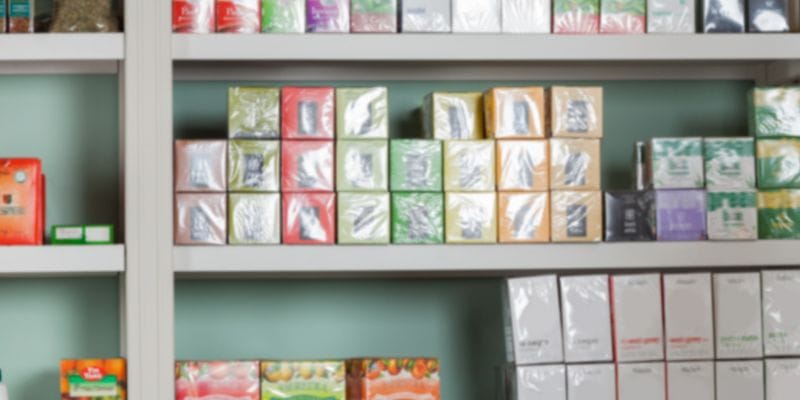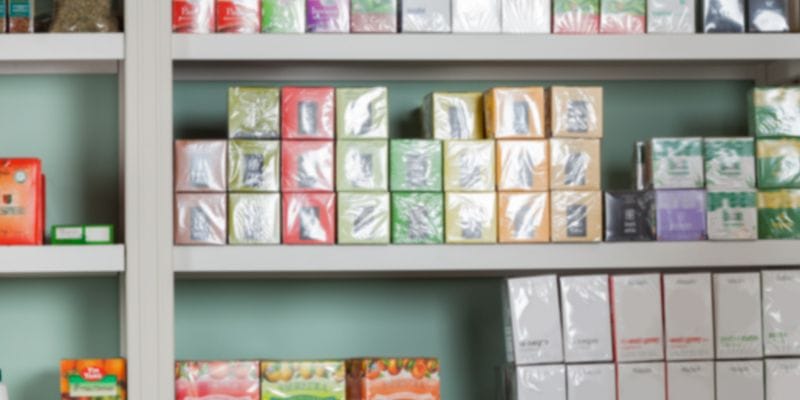
When it comes to food packaging, there’s more than meets the eye. Secondary food packaging, the first thing your customers see when picking up your products from retail shelves, plays a pivotal role in not only protecting your food and drink items during transit but also in conveying vital information about your brand.
Elevate Your Brand and Protect Your Products
Secondary food packaging is the unsung hero of the packaging world, and understanding its significance can make all the difference in the way your products are perceived and chosen by consumers.
Defining Secondary Packaging
Secondary packaging is the outer material that envelops and safeguards food, beverages, and consumer goods as they make their journey from production facilities to store shelves. It’s the layer that surrounds primary packaging, such as the packaging directly in contact with the product, and ensures that your products remain in pristine condition until they reach the end consumer.
In essence, secondary packaging is the gateway between your brand and your audience. How you choose to package, market, and display your products can influence a customer’s decision to purchase your merchandise over that of your competitors.
Secondary vs. Primary and Tertiary Packaging
To fully grasp the benefits of secondary food packaging, it’s essential to understand the three distinct types of packaging in the food industry: primary, secondary, and tertiary.
- Primary Packaging: This is the packaging that directly contains the product meant for consumption. For instance, it could be the plastic or paper wrapping around individual cookies, preserving their freshness and quality.
- Secondary Packaging: Secondary packaging contains one or more primary packages. Think of it as the metallic container holding individually wrapped cookies. It provides an additional layer of protection and organization.
- Tertiary Packaging: Tertiary packaging involves the cardboard box in which a certain number of secondary packages (cookie tins, for example) are placed for convenient and secure transportation to retail locations. It acts as a buffer against damage during transit and can even serve as an in-store display.
The Primary Functions of Secondary Packaging
While primary packaging is designed for direct contact with the product, and tertiary packaging focuses on transport and display, secondary packaging serves a unique set of functions that are vital for your brand and product presentation. The primary functions of secondary packaging include:
1. Making Your Products Display Ready
Secondary packaging is all about making your products visually appealing and display-ready. It provides a platform for product grouping and attractive display solutions, ensuring that your items catch the eye of potential customers.
2. Enhancing Branding
Packaging materials can play a crucial role in your company’s marketing strategy. They offer an opportunity to reinforce your brand identity and promote new products effectively. Your logo and branding elements on secondary packaging materials are the first things customers see when opening a package, leaving a lasting impression.
3. Adding Layers of Protection
In addition to primary packaging, secondary packaging materials act as an additional barrier during shipping and handling. They protect your goods from damage, preventing costly returns and keeping your customers satisfied. No one wants to receive products that are loose, broken, or scratched in any way.
4. Ensuring Customer Satisfaction
Secondary packaging is a critical element in ensuring the satisfaction of your customers. It not only safeguards your products but also conveys a sense of quality and care. At Peoria Production Solutions (PPS), we understand the importance of secondary packaging and go to great lengths to treat your products with the utmost care and attention through our secondary packaging services.
Common Secondary Food Packaging Materials
Secondary packaging comes in various forms, depending on the specific needs of a company’s packaging requirements. The type of packaging method chosen depends on the product and the stages it goes through during shipping, receiving, and unloading. Some of the most common types of secondary packaging materials include:
- Shipping Cartons: Sturdy cartons designed to protect and transport products safely.
- Shrink Wraps: Transparent wraps that provide protection and hold products securely.
- Outer Films: Protective films that wrap around multiple products or bundles.
- Cardboard Boxes: Versatile boxes used for various packaging needs.
- Trays: Custom trays that hold products securely in place.
- Paperboard Enclosures: Paper-based packaging for added protection.
- Plastic Packaging – Plastic is lightweight and comes in two primary forms: rigid and flexible, both serving as effective protectors for various food products.
- Glass Packaging – Glass offers the added benefit of being easily recyclable and chemically safe. However, its substantial weight and susceptibility to breakage present challenges when it comes to transporting bulk quantities.
- Metal Packaging – Metal is highly recyclable, rendering it an environmentally friendly storage solution.
Ideally, these secondary packaging materials are the only components making contact with primary packaging, ensuring the safety and integrity of the products inside.
Why is Secondary Packaging Important?
The significance of secondary packaging cannot be overstated, and it directly ties into the overall customer experience. When consumers purchase your products, they must interact with outer secondary packaging materials before reaching the primary packaging and the actual merchandise. Here’s why secondary packaging is so important:
Expressing Brand Identity
Secondary packaging provides a canvas for expressing your brand identity. Through branding phrases, signature color schemes, custom text, and eye-catching designs, you can make your products stand out and convey what your merchandise offers to the buyer.
Protecting Products in Transit
Getting products safely to their final destination requires meticulous planning. Everyone involved in handling your inventory interacts with your secondary packaging materials, making it crucial to safeguard your products during transit.
The Main Benefits of Secondary Food Packaging
Secondary packaging provides many benefits to food manufacturers and distributors. At PPS, we specialize in secondary packaging, and with more than 80 years of experience, we deliver a host of benefits to our food packaging customers.
1) Greater Protection for the Product
Secondary packaging shields contents from shocks and scratches, preventing items like cookies or chocolates from breaking or getting crushed. Additionally, it safeguards against the detrimental effects of light, which can compromise the taste and quality of certain products, such as tobacco or tea.
2) Enhanced Preservation Once Opened
Secondary food packaging not only prevents the deterioration of products before they are opened but also excels at preserving them once they are exposed.
3) Enhanced Presentation at the Point of Sale
Secondary food packaging immediately conveys a premium image. It is common to find food products meant for gifting, such as chocolates, cookies, or spirits, packaged in appealing materials that convey the uniqueness of the products inside. The presentation should be attractive and enhance the perception of the gift, conveying the value and quality of the food products inside.
PPS: Your Partner for Secondary Food Packaging
Peoria Production Solutions understands the unique advantages of secondary packaging. Our commitment to delivering quality secondary food packaging is unwavering. We recognize the importance of treating your products with care and attention, ensuring they reach their destination in perfect condition.
We offer a large, modernized facility with automated equipment and a trained, dedicated staff. PPS has vast experience in product kitting, assembly, packing, packaging, wrapping, bag-filling and auto-bagging, shrink-wrapping, labeling, palletizing and many other production solutions. We can help our customers to meet their production demands and provide input on the latest trends in secondary packaging services.
Stay Ahead with the Latest Food Packaging Trends
No comprehensive guide would be complete without a glimpse into the cutting-edge trends shaping the world of food packaging. Here are some of our favorite food packaging trends that can set your product apart from the competition:
Embrace Minimalist Designs
Minimalism isn’t confined to a specific industry; it’s a global trend. Step away from cluttered designs and opt for simplicity. Remember, less can often be more, especially in today’s design landscape.
Engage Through Interaction
Interactive packaging has taken the food industry by storm. In fact, it’s a trend we’ve highlighted in our top packaging trends for 2022. The key here is to let your creativity shine and introduce an interactive element into your packaging. This could involve technology or a unique physical characteristic that engages consumers and enhances their experience.
Embrace Bold Colors
While this may seem contradictory to the concept of minimalist design, bold colors are making a big statement in food packaging. When used thoughtfully, bold hues can complement a minimalist approach and draw the customer’s eye. They have the power to capture attention and leave a lasting impression.
These trends represent the forefront of food packaging innovation, offering exciting opportunities to elevate your product’s presence and appeal. By staying ahead of these trends, you can position your brand as a leader in the ever-evolving world of packaging design.
Secondary Food Co-Packing & Assembly Services
PPS offers a range of secondary food co-packing and assembly services, including secondary food carton kitting. Our highly trained and skilled packaging operators excel in providing quick and accurate carton kitting services, including subscription box fulfillment. We precisely pack your primary packaged food products into specified cartons with extraordinary efficiency focused on high-quality processes.
Quality Standards and Accountability
At PPS, we maintain strict quality standards with top-down involvement in every process. Our commitment to quality control includes rigorous testing of secondary packaging materials to ensure they meet your specifications. We implement lot code tracing and utilize our Enterprise Resource Planning (ERP) system for full accountability. Materials are inspected for the right thickness and dimensions, and quality control tools are employed to meet your requirements for critical dimensions.
Partner with PPS for Quality Secondary Food Packaging
With over 80 years of experience in providing contract packaging solutions, PPS stands as a leader among secondary packaging suppliers. What sets us apart is our commitment to our staff and our not-for-profit status, which prioritizes jobs over profits. This unique approach allows us to meet your requirements at a different level, offering customized packaging solutions tailored to your needs and budgetary goals.
Peoria Production Solutions is your trusted partner in secondary food packaging. Our skilled staff, controlled processes, and unwavering dedication to quality make us a leading packaging supplier, assisting OEMs of all sizes in meeting their shipping and distribution goals. Contact us today to discover how our secondary packaging solutions for food and beverage items can enhance your brand and protect your products.

